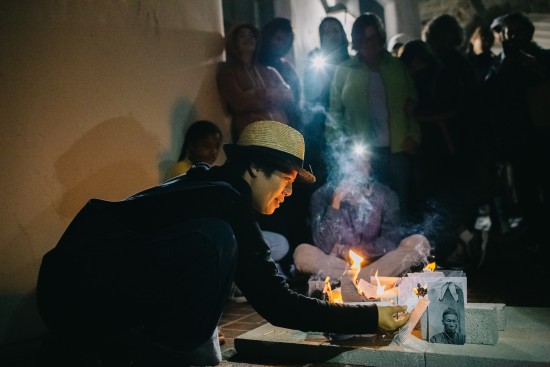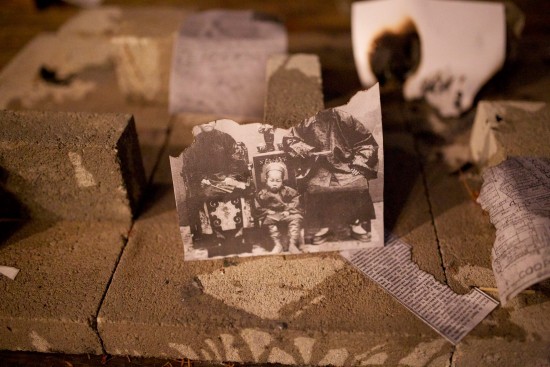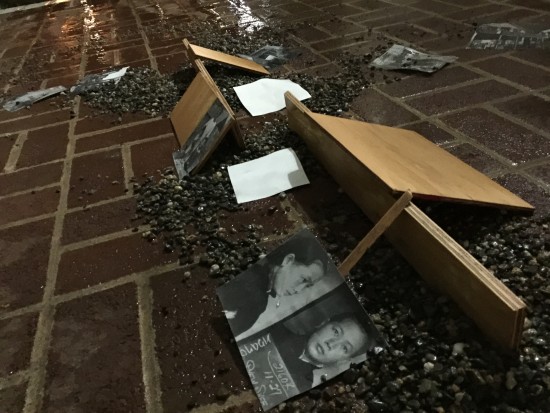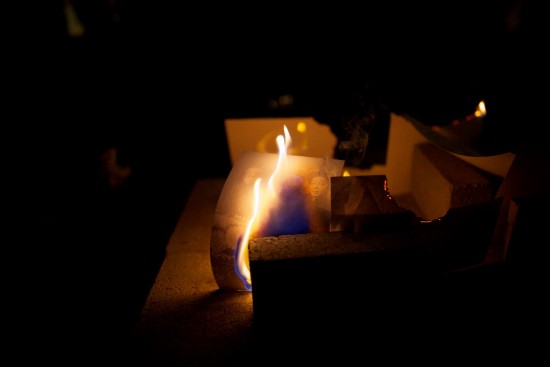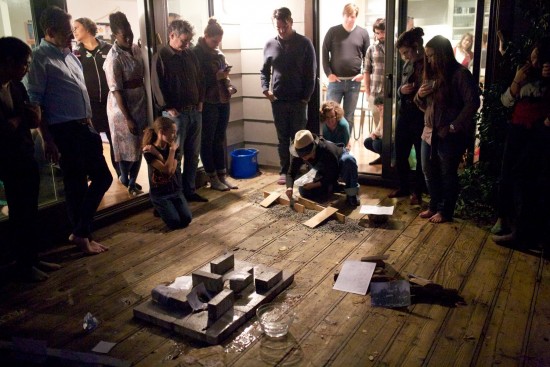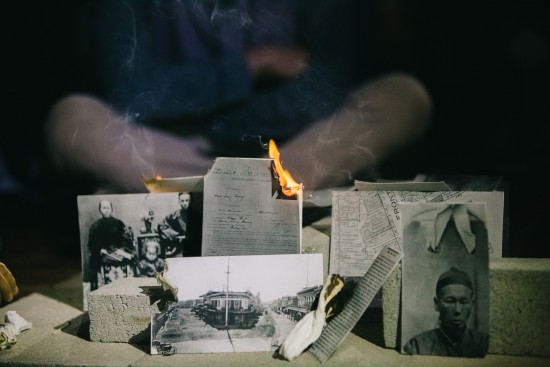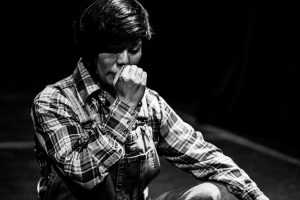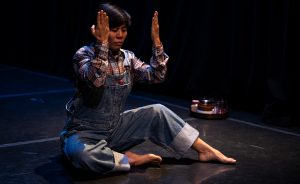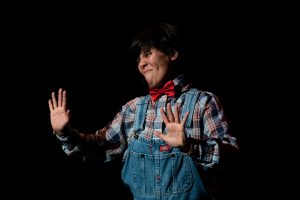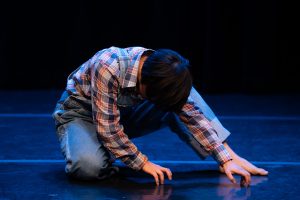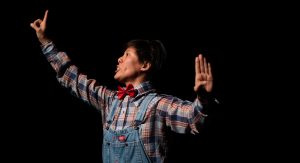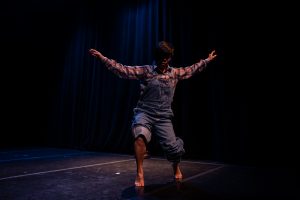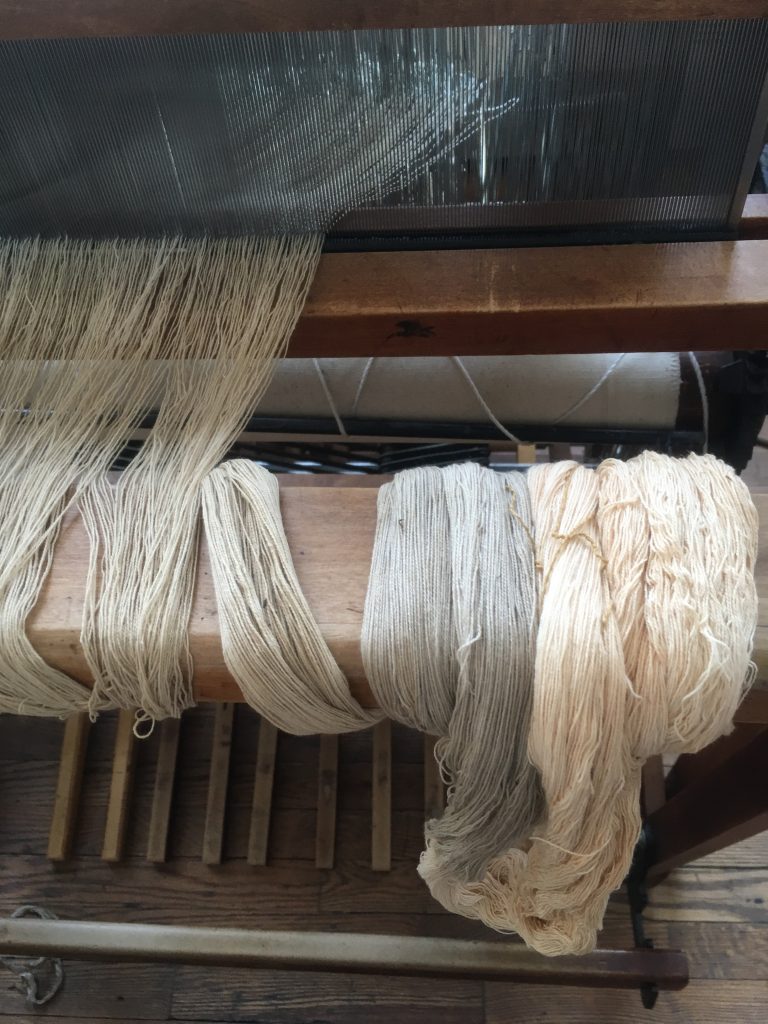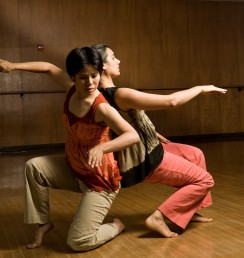Lost Chinatowns (2018)
Lost Chinatowns explores the destruction, lost vibrancy, and historical erasure of Santa Cruz’s Chinatowns from 1860-1955. Santa Cruz, now known for being the ultra-liberal “leftmost” city of the US, was once the center of virulently xenophobic anti-Chinese racism in California in the late 19th and early 20th centuries. This ongoing, iterative project takes multiple forms — site specific performance art, installation, dance-theater performance, participatory social practice — and aims to make connections between the historical othering of Asian bodies and current-day Islamophobic and anti-Latinx xenophobia in the US. Here are some manifestations of the project:
Lost Chinatowns: Destruction (2016)
In this performance art piece, I build and dismantle sculptural abstractions of each of Santa Cruz’s five Chinatowns, incorporating archival visual materials such as photographs, newspaper clippings, and maps.
Mixing Waters (2017-)
Project blog: mixingwaters.tumblr.com
I invite you to join me in a participatory ritual, “Mixing Waters,” which asks you to make imaginative connections between bodies of water as a political act.
I have been ruminating upon the San Lorenzo River, which was part of the texture of daily life for residents of the last Chinatown in Santa Cruz: a source of sustenance and a site of joyful play. I imagine the river as a possible place of respite from the relentless racial discrimination that Chinese people faced outside their home community. In 1955, waters flooded the banks of the San Lorenzo River, destroying Chinatown, and the land was sold and redeveloped into a shopping center.
Here’s how the process works:
(1) I mail you water from the San Lorenzo River.
(2) Gather water from a local body of water, preferably one with personal, geopolitical, or historical resonance.
(3) Hold your bottle of San Lorenzo River water in your hands. Notice what images come up — of natural beauty, archival photographs, personal memories, news images, etc.
(4) Hold your container of local water, again noticing what images arise.
(5) Pour the two waters into one vessel. As you do so, imagine the images and stories of the two bodies of water mixing and flowing into each other.
(6) Use the mixed waters to nourish a plant, either indigenous to this soil or a migrant plant (transplant).
(7) Watch the plant grow and continue to care for it.
(8) Document your ritual in a form of your choice, such as through photography, drawing, video, or written reflection, and send it to me to post on the Mixing Waters blog.
If you’re interested in participating, please contact me at info@cynthialinglee.com, and some water will soon be in the mail!
Back to the Beautiful (San Lorenzo/Angel Island) (2018)
This interactive installation is based on Back to the Beautiful (Water Memories), a site adaptive work about water and borders that I created with Sandra Chatterjee. The installation layers poetic/political video images and participatory encounters with the audience around the contradictory motifs of borders and beauty. Audiences move through an interactive installation that includes texts, videos, embodiment, and direct contact with water through ritual hand-washing and bottling of river water. The version that I adapted for Lost Chinatowns centered the history of Chinese migration to California, focusing on the San Lorenzo River as well as the waters surrounding Angel Island Immigration Station.
Lost Chinatowns (solo) (2018)
Weaving deftly through time, in this dance-theater work I take on characters spanning a century, drawn from deportation hearings, oral histories, poetry by undocumented migrants, racist newspaper editorials, and political speeches. These elements held together by embodied rhythms, emotive gestures, and poetic reflection.
Choreography, script, and performance: Cynthia Ling Lee
Direction: Shyamala Moorty
Dramaturgy: Scott Trafton
Sound Composition: Anna Friz
Lost Chinatowns (ensemble) (2018)
This ensemble dance-theater work brings together a dynamic cast of all Asian American women, imbuing the history of Santa Cruz’s Chinatowns with a sense of community care and resilience while embodying a diverse vision of Asian America.
Choreography, script, and performance: Cynthia Ling Lee with contributions from the performers
Performers: Clarissa Dyas, Lynn Huang, Zoe Huey, and Cynthia Ling Lee
Dramaturgy: Scott Trafton
Sound Composition: Anna Friz
Assistant Direction: Shyamala Moorty
weaving waters: my dirt and yours (2019)
In this long-distance collaboration with Appalachia-based weaver Jessica Green, soil and water from the sites where Santa Cruz’s historical Chinese communities lived and worked are integrated into hand-woven textiles in the form of dyes and stains. The textiles are accompanied by a soundscape that layers text onto sounds from the landscapes referenced in the work. For documentation of the process, please see mixingwaters.tumblr.com. Curated by Cara Hagan for My Place, Or Yours?
Lost Chinatowns: a ritual of remembrance (2019)
Designed by Cynthia Ling Lee, this event honored the often forgotten histories of Chinese Americans in Santa Cruz, California. Presented by the Santa Cruz Museum of Art and History in conjunction with the exhibition, “Guided by Ghosts,” the afternoon featured a talk and a walking tour by George Ow, Jr., an elder who grew up in Santa Cruz’s last Chinatown. It also incuded performances of Lost Chinatowns (solo) and Lost Chinatowns: Destruction and a ritual of remembrance held on the banks of the San Lorenzo River.
Lost Chinatowns: the game (in process)
This collaboration with Susana Ruiz and Huy Truong of Take Action Games extends the experience of Lost Chinatowns: Performance by utilizing gameplay via augmented reality. The audience would visit the site of the last Chinatown in Santa Cruz, what today is the Galleria in downtown Santa Cruz across the street from the Museum of Art & History. It would be a game which the visitor plays while walking through old “China Lane” toward the San Lorenzo River. The players would use their phones and see on their screens a variety of media overlaid on the real world. The homes, sidewalks, objects and people of the old 1940s and 1950s Chinatown would reemerge. The dancers from Lost Chinatowns appear, grounding us in the interpretative and poetic aesthetics of the experience and prompting the visitor/player to interact on-screen at the right places and moments.
Lost Chinatowns has been developed in part through Borders Resurfacing, a long distance creative exchange by the Post Natyam Collective. It has been developed with the support of 3Girls Theatre Company, San Francisco, California; a Hellman Fellowship; the Dancers’ Group’s CA$H grant program; and a CounterPulse 2018 Performing Diaspora residency.
